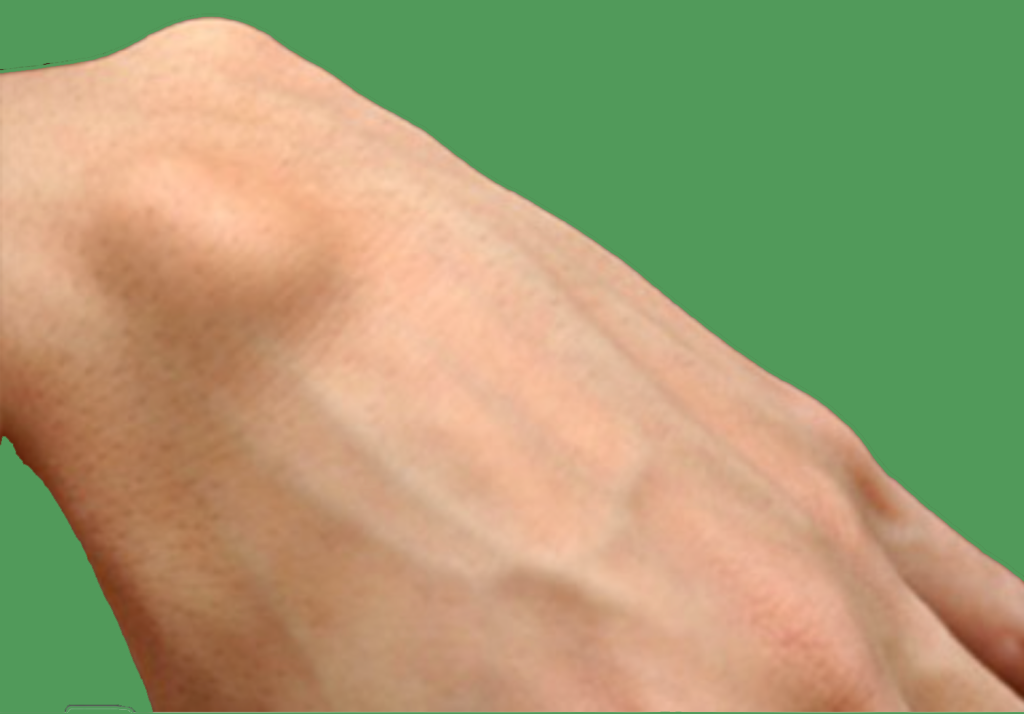Understanding Ganglion Cysts in the Wrist
Ganglion cysts are the most common type of swelling in the wrist. They are generally harmless and frequently disappear on their own within a few years.
What is a Ganglion?
A ganglion is a fluid-filled sac that typically arises from a joint, most commonly from the wrist joint. Joints are lined with synovium, a membrane that produces lubricating fluid to help the joint move smoothly. In some cases, this fluid leaks from the joint, and the surrounding tissues form a barrier to contain it—this barrier forms the wall of the ganglion. There are two main types of ganglion cysts around the wrist:
Dorsal Wrist Ganglion Cyst
Dorsal wrist ganglia are commonly found on the back of the wrist in young adults and teenagers. These cysts often disappear on their own within a couple of years. Although the cyst can be temporarily reduced in size by draining the fluid with a needle, it often returns. Surgical removal can be performed but carries a 25% recurrence rate and may lead to complications such as persistent pain, reduced wrist mobility, or nerve irritation around the scar area.
A dorsal wrist ganglion
Volar Wrist Ganglion Cyst
These cysts appear on the palm side of the wrist and may occur in young adults, but they are also seen in older individuals with wrist arthritis. Aspiration (fluid removal) can be attempted but requires caution, as the cyst is often near the artery that can be felt at the wrist pulse. Surgical removal has a recurrence risk of about 30%, with potential complications similar to those for dorsal ganglions, including pain, limited wrist movement, and nerve irritation.
A volar wrist ganglion
What Causes a Ganglion?
Ganglion cysts generally form from a joint, particularly in areas of the wrist where strong ligaments are attached. The cyst size can fluctuate over time, often enlarging with repetitive wrist use, which can push more fluid into the cyst. However, once fluid enters the cyst, it doesn’t readily flow back into the joint.
What are the symptoms of a Ganglion?
Ganglions appear as lumps or swellings, typically visible when the wrist is bent. In some cases, the cyst may grow quite large, causing discomfort due to its size or due to mild irritation of nearby skin nerves. However, discomfort does not imply any danger—ganglions are harmless, and it is safe to use the hand normally, even if the cyst causes some irritation.
How is a Ganglion diagnosed?
Diagnosis of a ganglion is usually straightforward due to its smooth, round appearance, typical locations, and fluctuating size. Clinical examination is typically sufficient, and imaging is rarely needed.
What is the natural history of Ganglions?
Ganglion cysts tend to vary in size over time and most will naturally disappear within a few years. As a benign condition, they rarely cause serious problems.
What treatment options are available for Ganglions?
Ganglion cysts are harmless, and treatment is often unnecessary unless the cyst causes significant discomfort. Treatment options include:
Aspiration
The fluid within the cyst is thick and jelly-like. Therefore, a large needle is necessary to withdraw the contents from the cyst. This temporarily reduces the cyst’s size. Aspiration can confirm the diagnosis, but it is not a cure, as the cyst typically refills within weeks. Risks of aspiration include infection, bleeding, and rare complications.
Surgical Removal
Surgical excision of a ganglion is possible, though satisfaction rates following this surgery can be lower than expected. Since ganglion cysts are benign and often resolve on their own, the decision to proceed with surgery should be made with careful consideration and a discussion with a surgeon about potential risks and outcomes.






















